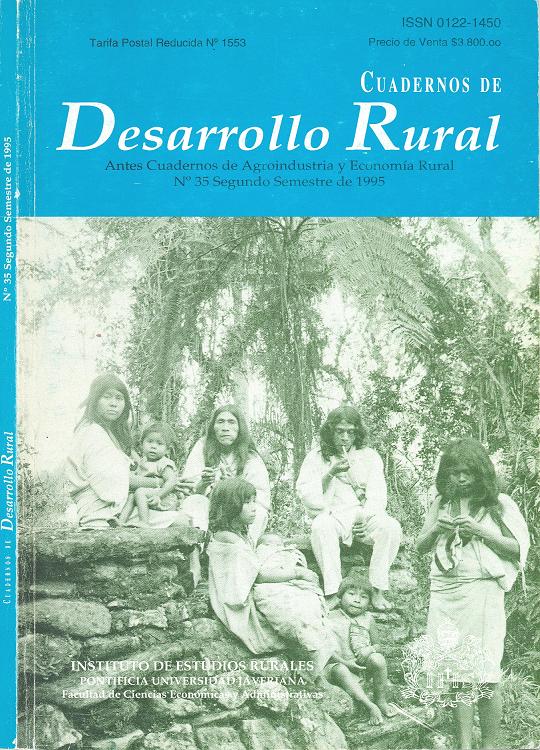Abstract
La producción de papa en Colombia se caracteriza por ser una actividad agrícola adelantada fundamentalmente por campesinos. En las zonas aptas para el cultivo predomina el minifundio y la existencia de una economía campesina que mantiene esta actividad comoparte de sus estrategias de supervivencia. Sin embargo, en algunas zonas del pais existen productores, predominantemente de origen campesino, que han logrado hacer rentable esta actividad. El artículo presenta el caso de la organización de mayor producción de papa en el pais, que bajo la gestión de un productor emprendedor, ha logrado mantener significativos volúmenes de producción. El desarrolIo del caso expone los elementos más relevantes de la organización y su entorno, para finalmente realizar una aproximación a la identificación de factores que contribuyan a explicar la presencia y permanencia de grandes productores de papa no campesinos en Colombia.Cuadernos de Desarrollo Ruralis registered under a Creative Commons Attribution 4.0 International Public License. Thus, this work may be reproduced, distributed, and publicly shared in digital format, as long as the names of the authors and Pontificia Universidad Javeriana are acknowledged. Others are allowed to quote, adapt, transform, auto-archive, republish, and create based on this material, for any purpose (even commercial ones), provided the authorship is duly acknowledged, a link to the original work is provided, and it is specified if changes have been made. Pontificia Universidad Javeriana does not hold the rights of published works and the authors are solely responsible for the contents of their works; they keep the moral, intellectual, privacy, and publicity rights.
Approving the intervention of the work (review, copy-editing, translation, layout) and the following outreach, are granted through an use license and not through an assignment of rights. This means the journal and Pontificia Universidad Javeriana cannot be held responsible for any ethical malpractice by the authors. As a consequence of the protection granted by the use license, the journal is not required to publish recantations or modify information already published, unless the errata stems from the editorial management process. Publishing contents in this journal does not generate royalties for contributors.


